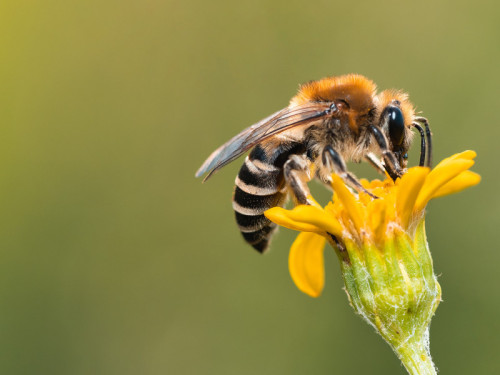Ohio State Leads Efforts to Protect Bee Population and Biodiversity

The Ohio Biodiversity Conservation Partnership (OBCP) has made significant strides in preserving the state’s bee population through its ongoing Ohio Bee Survey. Now entering its fifth year, the survey has already identified over 330 species of bees in Ohio, including nearly 50 specialist species. This initiative aims to provide a clearer understanding of the biodiversity within the state, which is estimated to support between 400 and 450 species of bees.
The OBCP, founded in 2010 at Ohio State University, has become a vital resource for wildlife conservation efforts across the state. Under the direction of H. Lisle Gibbs, a professor at the university, the partnership collaborates closely with the Ohio Division of Wildlife. This collaboration ensures that scientific research directly informs the state’s conservation strategies.
According to Gibbs, the OBCP plays a critical role in gathering essential ecological data, particularly concerning rare species. “We’ve collected a ton of ecological data over the last few years about these rare species. We now know where they occur and have a better understanding of their habitat requirements,” he stated.
Funding for these efforts comes from the U.S. Fish and Wildlife Service, which allocates about $3 million annually to Ohio specifically for animal conservation. Approximately one-third of this funding is directed to the OBCP, facilitating research and training for both graduate and undergraduate students. “We provide scientific research to help them do their job, which is to protect the biodiversity of the state,” Gibbs added.
Community Engagement and Workforce Development
The partnership between Ohio State and the Ohio Division of Wildlife has matured over the past 15 years, fostering a sense of trust and collaboration. This relationship not only benefits research but also aids in workforce development. The program trains students who are prepared to fill roles within the division, enhancing the state’s conservation capabilities.
Data collection methods for the bee survey include trapping bees using passive water traps, which sometimes capture other insects as well. “We call that ‘bycatch’,” said Karen Goodell, a professor at Ohio State Newark and member of the OBCP. The specimens captured have proven valuable for educational projects. For example, one project delivered an update on hoverfly species counts, marking the largest survey of its kind in Ohio in over a century.
Community involvement is also a cornerstone of the OBCP’s success. Many of the bee specimens have been collected by volunteers interested in science. “There are quite a lot of people interested in pollinators in Ohio,” Goodell noted, highlighting the role of retirees and other community members in contributing valuable data.
Gibbs emphasized the importance of public engagement. “You can leverage the interest of the general public, a cast of thousands, to collect data,” he affirmed. This extensive collaboration illustrates the OBCP’s commitment to not only academic research but also to community involvement in conservation efforts.
Long-term Commitment to Biodiversity
As the OBCP continues its work, the overarching goal remains clear: to benefit the citizens of Ohio through impactful research and conservation initiatives. Gibbs reflected on the significance of this mission, stating, “What we’re doing is special. We are a land-grant university, and this is exactly what we’re supposed to be doing.”
The OBCP stands as a testament to the power of collaboration between academia, government, and the public. By harnessing the collective expertise and enthusiasm of these diverse groups, Ohio is making significant progress in its efforts to protect its invaluable biodiversity, ensuring that future generations can enjoy a rich and diverse natural environment.






